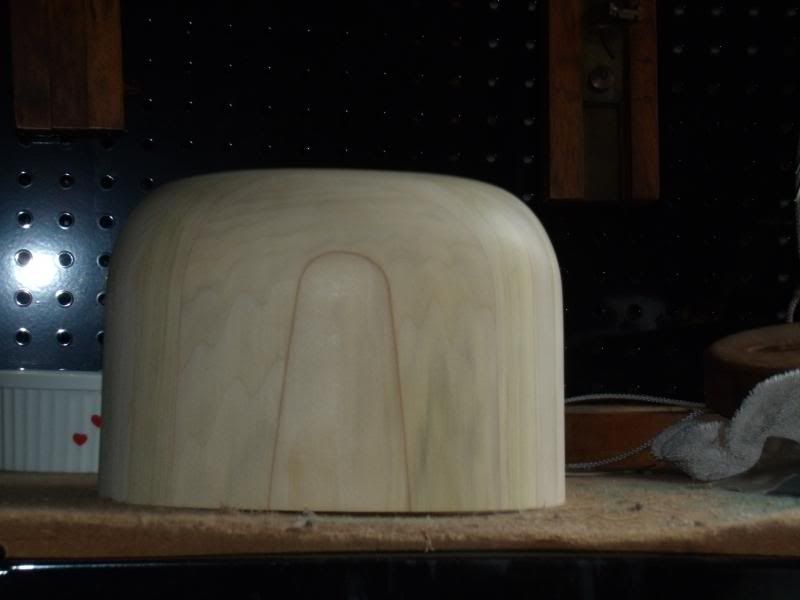- Messages
- 10,607
- Location
- My mother's basement
We’ve all seen the story – in the newspaper, on TV, whatever: A nice little feature on the local person who practices the once commonplace but now rare hat-making trade, using the very same equipment used upwards of a century (or even longer) ago.
Change the particulars and it’s almost always the same story. And that’s fine, really. It’s what the story is, so it’s usually at least passably accurate. And it’s interesting enough to hold the average person’s attention for the two or three minutes it takes to tell it, or read it, before we move on to sports or weather.
But the reason most all hatters use old equipment is because that’s what they can find. Back when many (most?) men wouldn’t step outside without proper hats atop their heads, there was a great demand for the hatter’s skills, and hence there were many hatters’ equipment suppliers. These days, the manufacture of hat blocks and flanges and hat-shop tools and machinery is essentially a cottage industry. There are people making this stuff, but it’s far from a mass-production undertaking.
It is fortunate that most of the old equipment is sufficiently basic, and sturdily built, that it remains serviceable all these decades on. But still, it’s old stuff, and nothing lasts forever.
Truth is, the notion that the old equipment is superior on account of nothing other than its age is magical thinking. I’d replace all couple of hundred blocks and flanges in my shop with new stuff, if it were available at an affordable price.
The old equipment is still quite usable, for sure, but it presents its challenges. Old blocks and flanges develop cracks and splits. They get a surface oxidation that has to be addressed lest it transfer to the hat felt. Et cetera. A craftsperson wishes to spend the day working with his or her tools, and not on them.
I did a good turn for my friend the guitar maker, who returned the favor by making a new block. I think it’s downright purty …


Change the particulars and it’s almost always the same story. And that’s fine, really. It’s what the story is, so it’s usually at least passably accurate. And it’s interesting enough to hold the average person’s attention for the two or three minutes it takes to tell it, or read it, before we move on to sports or weather.
But the reason most all hatters use old equipment is because that’s what they can find. Back when many (most?) men wouldn’t step outside without proper hats atop their heads, there was a great demand for the hatter’s skills, and hence there were many hatters’ equipment suppliers. These days, the manufacture of hat blocks and flanges and hat-shop tools and machinery is essentially a cottage industry. There are people making this stuff, but it’s far from a mass-production undertaking.
It is fortunate that most of the old equipment is sufficiently basic, and sturdily built, that it remains serviceable all these decades on. But still, it’s old stuff, and nothing lasts forever.
Truth is, the notion that the old equipment is superior on account of nothing other than its age is magical thinking. I’d replace all couple of hundred blocks and flanges in my shop with new stuff, if it were available at an affordable price.
The old equipment is still quite usable, for sure, but it presents its challenges. Old blocks and flanges develop cracks and splits. They get a surface oxidation that has to be addressed lest it transfer to the hat felt. Et cetera. A craftsperson wishes to spend the day working with his or her tools, and not on them.
I did a good turn for my friend the guitar maker, who returned the favor by making a new block. I think it’s downright purty …


Last edited: